If you’re taking finasteride for hair loss or an enlarged prostate, you’ve probably heard about its benefits. But there’s one side effect that catches many men off guard: gynecomastia, or male breast enlargement.
Ever wondered why this happens, how to spot it early, and what you can do about it? This guide will explain everything you need to know about finasteride gynecomastia in clear, simple language.
While the idea of developing breast tissue can feel alarming, knowledge is your best defense. Understanding the connection between finasteride and hormone balance allows you to take control of your health. With the correct information, you can recognize early warning signs, talk to your doctor with confidence, and make informed decisions about continuing or adjusting your treatment.
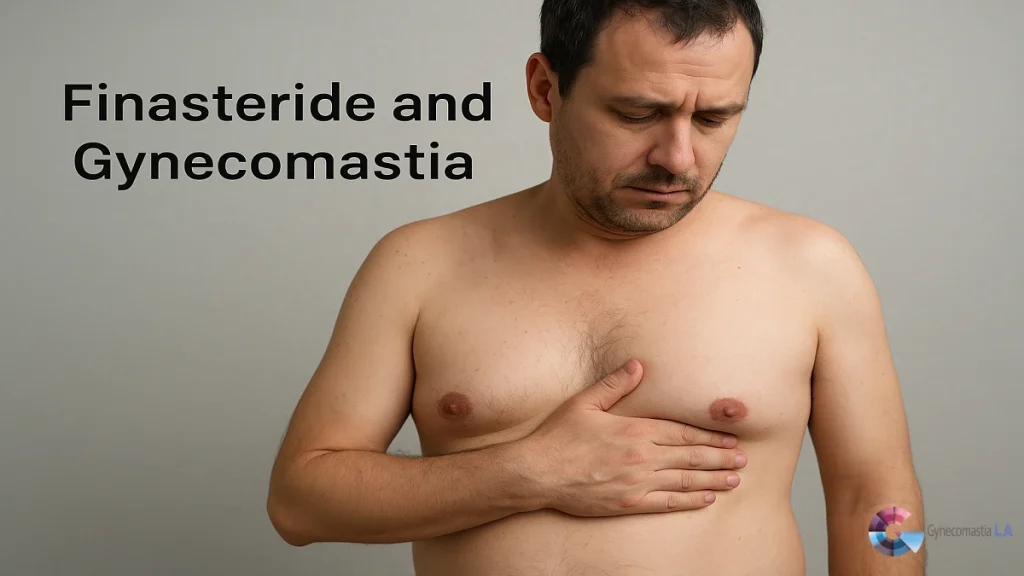
Introduction to Finasteride Gynecomastia
Finasteride gynecomastia refers to the enlargement of male breast tissue caused by taking finasteride, a drug often prescribed for:
- Male pattern baldness
- Benign prostatic hyperplasia (BPH)
While finasteride helps many men regain hair and confidence, this rare but possible side effect can affect self-image if not addressed early.
What Is Gynecomastia in Men?
Gynecomastia is true breast tissue growth in men, different from simple fat accumulation. It typically:
- Forms a firm lump under the nipple
- May cause tenderness or soreness
- Can occur on one or both sides
Think of it as your body sending a “hormonal imbalance alert” through your chest.
Types of Gynecomastia
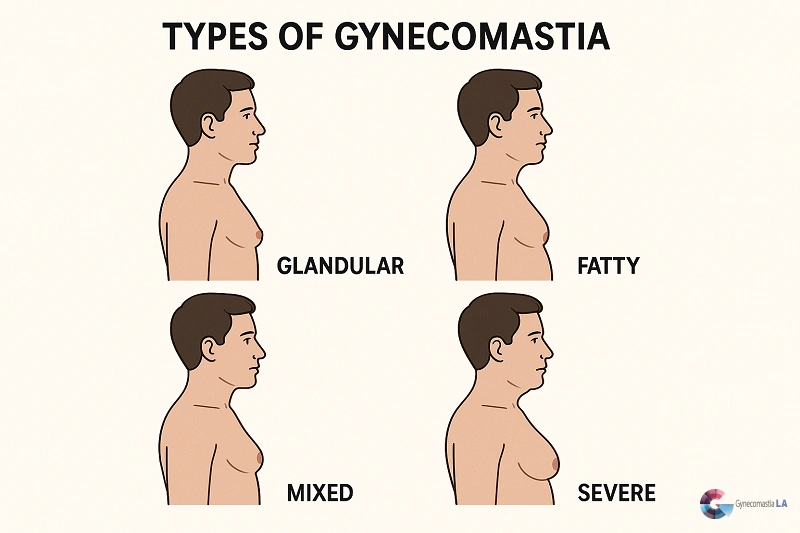
Gynecomastia can be classified into four main gyno types, based on the amount of glandular tissue and fat:
| Type | Description | Common Treatment |
|---|---|---|
| Glandular Gynecomastia | Firm breast tissue growth under the nipple due to hormonal imbalance. | Surgical excision |
| Fatty Gynecomastia | Soft chest enlargement caused mainly by fat (pseudogynecomastia). | Weight loss or liposuction |
| Mixed Gynecomastia | Combination of glandular tissue and fat; most common type. | Excision with liposuction |
| Severe / Grade IV Gynecomastia | Significant breast growth with sagging skin, often in long-standing cases. | Male breast reduction with skin lift |
How Finasteride Works?
Finasteride blocks the 5-alpha-reductase enzyme, preventing testosterone from converting into DHT (dihydrotestosterone).
- Less DHT = Less hair loss & smaller prostate
- But, changing hormone balance can sometimes let estrogen have more influence, leading to breast tissue growth.
Why Finasteride Can Cause Gynecomastia?
Finasteride gynecomastia occurs because:
- Lower DHT levels reduce the “masculine” influence on tissues.
- Relative estrogen dominance stimulates breast tissue.
Clinical studies suggest 1–2% of finasteride users may experience this, usually within 6–12 months of starting treatment.
Hormonal Changes Explained
To simplify hormone interactions:
| Hormone | Role in Men | When Imbalanced |
|---|---|---|
| Testosterone | Muscle & libido | Low = Fat gain, less muscle |
| DHT | Hair loss & prostate growth | Low = Less hair loss |
| Estrogen | Regulates tissue growth | High influence = Breast tissue growth |
Finasteride tips the balance, which can trigger male breast enlargement in sensitive individuals.
Early Warning Symptoms of Gyno
Watch for these signs while on finasteride:
- Small lump under the nipple
- Swelling or mild tenderness
- Changes in nipple shape or sensitivity
Catching it early may allow reversal without surgery.
Differentiating Gynecomastia from Chest Fat
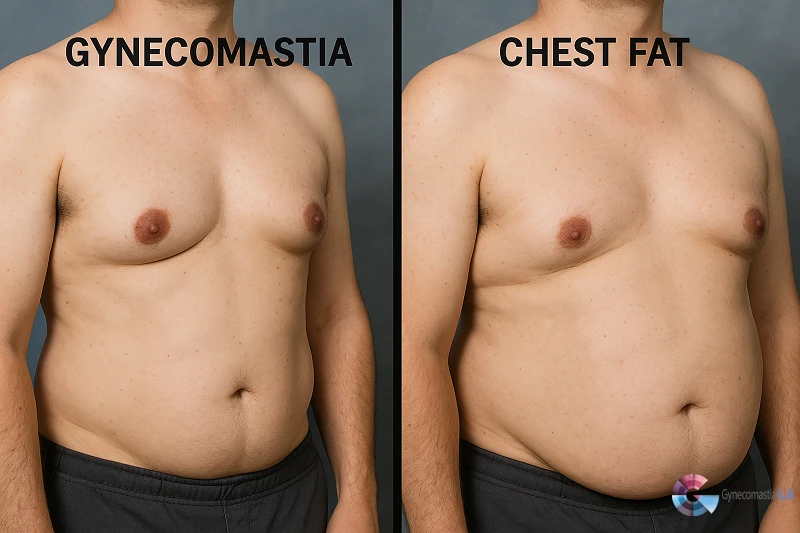
Telling the difference between gynecomastia and regular chest fat (pseudogynecomastia) can be challenging. Gynecomastia causes firm glandular tissue to grow directly under the nipple, often creating a small, rubbery lump. Chest fat, on the other hand, feels soft and spread out, usually linked to overall weight gain or obesity.
If you’re unsure which one you have, here’s a simple tip: true gynecomastia won’t go away with exercise or diet alone, while chest fat often improves with weight loss.
💡 For more details about the differences between gynecomastia and chest fat, you can get additional information on this page.
Emotional and Preventive Aspects of Finasteride Gynecomastia
Finasteride gynecomastia isn’t just a physical change; it can deeply affect a man’s confidence and emotional well-being. Many men feel self-conscious, avoiding activities like swimming or the gym, and some even describe it as “wearing a secret you can’t hide.” This emotional weight can also affect relationships and social interactions.
The good news is, preventive measures can reduce your risk. Regular chest self-checks, maintaining a healthy weight, avoiding anabolic steroids and heavy alcohol use, and monitoring hormone levels can all make a difference. Being proactive not only helps you spot changes early but also protects your confidence and quality of life.
Non-Surgical Treatments For Gyno
Early-stage gynecomastia can often be reversed:
- Adjusting medication or lowering finasteride dose
- SERMs (like tamoxifen) to block estrogen effects
- Lifestyle changes to reduce fat and inflammation
Surgical Options for Persistent Cases of Gyno
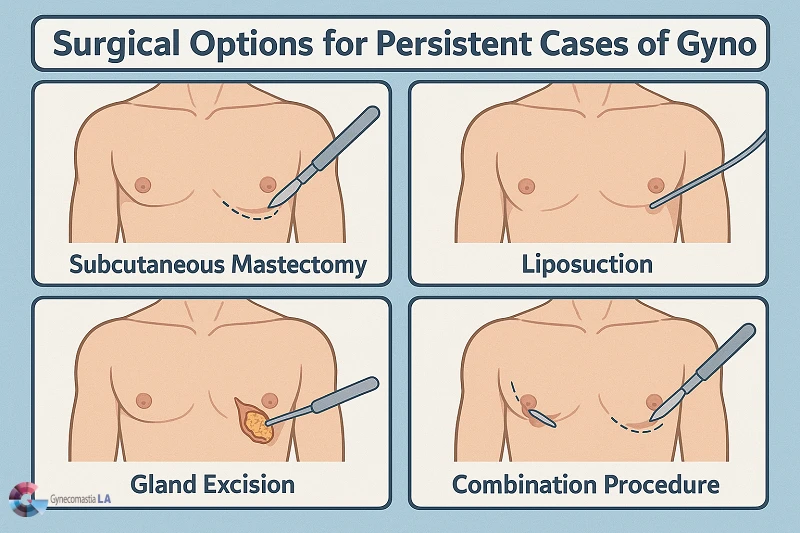
If gynecomastia persists beyond 12 months:
- Liposuction removes fat
- Excision surgery removes glandular tissue
- Combined techniques for best cosmetic result
Recovery is 1–2 weeks, and results are usually permanent.
Finasteride Gynecomastia: Managing Medications and Regaining Confidence
If you begin to notice signs of finasteride gynecomastia, it’s crucial to consult your doctor promptly rather than stopping the medication on your own. Your physician may suggest adjusting the dose, switching to alternatives such as dutasteride, or using topical hair loss treatments to reduce the risk of further breast tissue growth.
With timely treatment and medical guidance, most men can restore their chest shape, regain confidence, and continue managing hair loss or prostate health without compromising their appearance. Addressing the issue early helps protect both physical and emotional well-being.
Expert Care for Finasteride Gynecomastia with Dr. Moein
Finasteride gynecomastia may be uncommon, but it is a real concern for men using the medication for hair loss or an enlarged prostate. By understanding the risk, monitoring early signs such as tenderness or swelling, and seeking timely treatment, you can protect both your health and self-confidence while still enjoying the benefits of finasteride.
At Gynecomastia clinic in Los Angeles, Dr. Babak Moein, a highly experienced cosmetic and reconstructive surgeon, offers advanced male breast reduction solutions tailored to your needs. Modern techniques like VASER liposuction for precise fat removal and J-Plasma skin tightening for smooth, firm chest contours help patients recover quickly with minimal scarring and a natural appearance.
We understand that treatment is more than just surgery’s a full recovery experience. Our team can assist with hotel accommodations and travel arrangements, making your journey smooth if you are visiting from outside Los Angeles. From initial consultation to post-operative care, every detail is handled to ensure comfort, privacy, and optimal results.
📞 Call us today at (310) 861-3799 or fill out our secure contact form to schedule your private consultation with Dr. Moein. Reclaim your confidence, enjoy a smooth recovery, and experience expert gynecomastia care in Los Angeles.
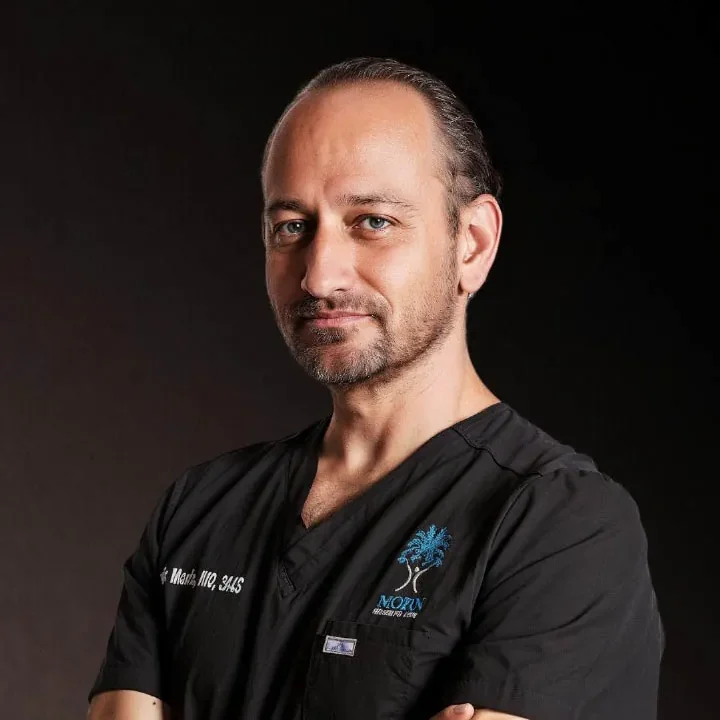
Dr.Babak Moeinolmolki
LA Cosmetic Surgeon Dr. Moein is board-certified by the American Board of General Surgery.

